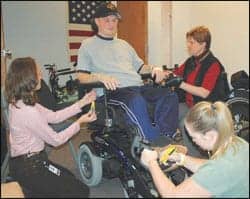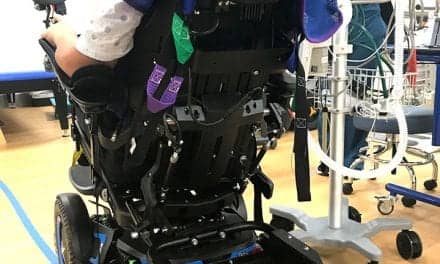.png)
The test uses, “complex algorithms to quantify how well a subject can follow, and synchronize with the target,” Kevin Coppersmith, Sync Think CEO, explains. “We believe eye-movement control provides a window to the brain and can be a reliable indicator of brain health,” Coppersmith adds. Coppersmith reports that EYE-TRAC is designed to provide the ability to bring the technology closer to deployed soldiers who have suffered blast injuries.
“The ultimate goal is to provide the most accurate and efficient tools and techniques for determining soldier performance and readiness,” Kristin Heaton, PhD, neuropsychologist, USARIEM, emphasizes. Bringing these tools as close as possible to where the individual is stationed in the field is also integral to the USARIEM’s goal, Heaton says.
Researchers report that USARIEM and Jamshid Ghajar, MD, PhD, the Brain Trauma Foundation, also located in New York, will join in a collaborative research effort to evaluate the device in a study encompassing 350 soldiers at the USARIEM’s Natick Soldier Systems Center.
Coppersmith emphasizes that the EYE-TRAC is designed as a combat-readiness tool, rather than diagnostic. “…Diagnostic tends to include other testing and patient history, but we have found significant differences in eye-movement behavior in those with injury relative to those who are healthy.”
Heaton adds that the tool is one of main in an ongoing effort to provide accurate, efficient assessment tools and techniques for field use.
For more information, visit http://www.army.mil/
Source: US Army




